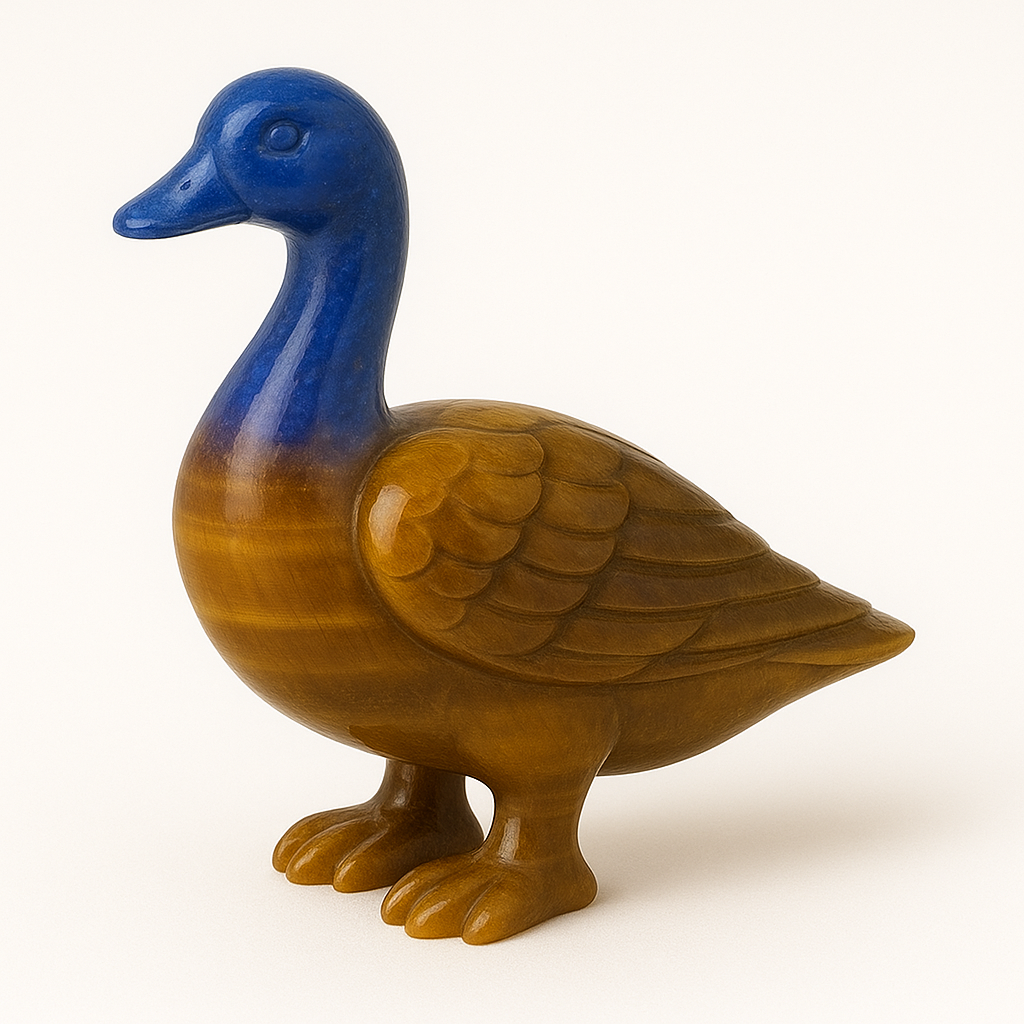
The Symbolism of Geese
Share
With wings that cut the air in V-formation and voices that echo through changing skies, geese are symbols of directional unity, collective endurance, and seasonal transformation. They do not migrate alone. They move as a pattern, as a system, each taking turns to lead and rest—sharing the burden, honoring the rhythm. The goose is a creature of devotion to the greater path, of communal purpose, and of intelligent loyalty.
To contemplate the goose is to align with the archetype of shared spiritual journeying, where progress is not solitary, but woven through mutual trust, timing, and the wisdom to fly together or not at all.
The Navigator in Cultural Memory
Across cultures, geese have long represented the sacred movement between worlds, and the intelligence of knowing when to leave, when to stay, and when to return.
In Celtic mythology, the goose was connected to mystery and migration, seen as a guardian of transitions and thresholds. It was believed that geese could travel between the physical and spirit realms, appearing at times of seasonal or spiritual passage. Their honking cries were thought to be calls from the unseen, guiding those who were ready to move.
In Eastern traditions, particularly Chinese symbology, wild geese are expressions of fidelity and partnership—often appearing in art and literature as signs of loyal union and long-distance devotion. Because they mate for life, they are seen as models of emotional commitment through all seasons.
In Indigenous North American wisdom, geese are recognized for their migratory knowledge, reflecting the necessity of change, movement, and trusting the map within. The “V” they form in flight is not random—it is geometry in motion, a living example of energy efficiency, leadership rotation, and shared direction.
In all myth and meaning, the goose is not the wanderer—it is the guided traveler, always listening for when the time has come to rise again.
Flight, Formation, and Sacred Coordination
Geese live in synchrony. Their flight is not only visual—it is vibrational. They honk to encourage each other, to maintain coherence in the field, to keep the group unified in rhythm and breath.
They alternate positions, knowing when to lead and when to follow. In this, they teach that leadership is not dominance, but a role to be shared for the sake of the whole. Their migrations span continents, yet their return is precise. They do not get lost. They remember the way.
Even on land, geese are fiercely protective of their young and their group. Their cries become alarm bells. Their presence is grounded, alert, and never unaware. They remind the seeker that to travel far, one must be both committed to the path and attuned to the flock.
Resonance with the Energy Centers
The goose resonates primarily with the yellow-ray energy center—the solar plexus chakra, which governs group coordination, identity within the collective, and harmonized will.
This is the center where selfhood meets society. In the goose, the yellow-ray is clear and undistorted—each self knows its part, its timing, and its relationship to the larger movement. There is no ego in flight, no chaos in migration—only purpose shared across many selves, all aligned with one invisible path.
There is also a secondary resonance with the blue-ray energy center—the throat chakra, which governs communication, expression, and resonance across distance.
Geese are vocal not for noise, but for coherence. Their calls maintain the field, ensuring that all are seen, felt, and synchronized. This is not performance—it is transmission. The blue-ray in the goose functions as sound in service of unity.
Together, yellow and blue form the energetic current of the goose:
collective intelligence,
clear communication,
and the devotion to a path walked—and flown—together.
The One Who Knows When to Move
To walk with the goose is to understand that the journey cannot always be made alone. It teaches that direction matters, but so does companionship, and that progress without rhythm is not flight, but dispersal. The goose shows the seeker how to lead when called, follow when needed, and rest when weary, all without losing the direction of the soul’s return.
The goose does not fly for glory.
It flies because the season calls it to move.
It does not separate.
It brings others along—not in burden, but in bond.
It teaches:
Fly in formation.
Sing to each other.
And when it is time, rise together.